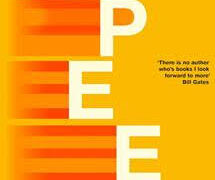
Chapter 4: Faxian, Xuanzang and Yijing in India (400–700 CE)
I don’t know many books in which ‘Go west, young man!’ would be a call to go to India. One such book is Journey to the West, ‘China’s most beloved novel of religious quest and picaresque adventure’, published in the 1590s during the waning years of the Ming Dynasty. The novel’s hero, ‘a mischievous monkey with human traits . . . accompanies the monk hero on his action-filled travels to India in search of Buddhist scripture’. It allegorically presents pilgrims journeying towards India as individuals journeying towards enlightenment.
The inspiration for this novel was a journey made by a seventh-century-CE Chinese man, Xuanzang (aka Hiuen Tsang), a Buddhist monk who embarked on an adventurous seventeen-year trip to India, part of which he spent at Nalanda Mahavihara, a great Buddhist centre of learning. Other Chinese Buddhists had visited India before Xuanzang, and many more would follow, but three pilgrims left records of their journeys that would survive, giving us vital portraits of the Indian social and religious life between 400 and 700 CE. These are Faxian (aka Fa- Hien, c. 337– 422 CE), Xuanzang (c. 602–664 CE) and Yijing (635–713 CE). All three of them began their journeys in Chang’an (modern Xian), a multicultural hotspot and terminus of the Silk Road. They went as pilgrims seeking Buddhist scholarship and authoritative texts to take back home, but were also among the world’s earliest legendary adventurers and travel writers.
Buddhism arrived in China in the first century CE with traders and missionaries from India and Central Asia along the Silk Road and later on sea routes. The Kushan Dynasty, patrons of Buddhism based in Gandhara, played a key role in its transmission. Buddhism at first gained a following among the elite in China. But far as it was from its Indian roots, Chinese Buddhism grew based less on original scriptures, and more on derivative texts and local
innovations. Buddhists were often misunderstood and defamed in China. Poor translations confused followers, as did contrary ideas from different schools of Buddhism across Central, South and South East Asia.
Nascent Buddhist communities in China therefore yearned for authentic sources on which their institutions, teachings and practices could be based. Many Chinese Buddhists also longed to see the places the Buddha had once inhabited. This, and not trade, tourism or secular inquiry, became the primary motive behind the steady stream of Chinese visitors to India in the mid-first millennium CE. It helped that the Sui and Tang Dynasties in China,
from around 500 CE, had begun to patronize Buddhism, which by then had gained a critical mass of followers. Yijing himself wrote biographies of fifty-six pilgrims—mostly Chinese, a few Koreans and one Central Asian, which included five he had personally met.
All of them had gone to India, learnt Sanskrit, visited pilgrimage sites, studied the Buddhist religion and philosophy at monasteries like Nalanda, and returned with ideas and books to enrich Buddhism at home. There were likely hundreds more in the third quarter of the first millennium. Many Indian monks also went as missionaries and scholars to China but none of their observations of China have come down to us. When Buddhism in India went into terminal decline around 800 CE and died out soon after 1200 CE, nearly all of its texts were lost forever (India’s humid weather didn’t help).
Buddhism, its monuments and even the Buddha himself, were as good as forgotten by Indians. This changed only after the travel writings of Faxian, Xuanzang and Yijing were discovered and translated by European Indologists in the nineteenth and early twentieth centuries. Their eyewitness accounts of geography, society, customs, material life and religion greatly expanded our understanding of the Indian past. Many Chinese translations of Indian Buddhist texts, the earliest of which date to fifth century CE, were recognized as the closest approximations of the Indian originals. This was similar to the ‘rediscovery’ of the ancient Graeco-Roman antiquity in Europe and of ancient Greek texts we know onlythrough Arabic translations from the ‘golden age’ of Islam in the ninth and tenth centuries.
Many Journeys, One Goal
Faxian was ‘the pioneer of all’, wrote Yijing. A native of Wuyang in today’s Shanxi Province, Faxian’s three older brothers all died before ‘shedding their first teeth’. His father exposed young Faxian to a Buddhist sangha and then sent him to a monastery, where the boy apparently felt quite at home. Both his parents died when he was around ten. By the time he completed his apprenticeship and was ordained a full monk, Faxian was noted for his courage, intelligence and self-control. ‘Deploring the mutilated and imperfect state of the collection of the Books of Discipline’, Faxian decided to visit India to gather texts on the Vinaya Pitaka, or monastic rules for monks and nuns; it’s not clear why he had to wait until he was in his early sixties to set out on the land route to India with four fellow pilgrims.
The five pilgrims crossed the Gobi Desert, with its ‘many evil demons and hot winds’. There were no tracks to follow, wrote Faxian. ‘Though you look all round most earnestly to find where you can cross, you know not where to make your choice, the only mark and indication being the dry bones of the dead [upon the sand]. Later, when his party had great difficulties crossing rivers, he described their sufferings as ‘unparalleled in human experience’. Despite the hardships, Faxian and his companions often found Buddhist communities and monasteries across Central Asia, which aided and hosted them en route. They reached the Indian Subcontinent via Khotan, c. 402 CE, and passed Gandhara, Takshashila and the kingdom of Purushapura (modern Peshawar). By the time they reached central India, they had been on the road for six years!
Faxian spent the next six years in India and visited many sites associated with the Buddha, such as Lumbini and Rajagriha. It took him three more years to return to China by sea. He took back with him many texts ‘unknown in the land of Han’ aboard a large ship carrying ‘more than 200 men’, braving the terrors of tempests and his ship springing a leak. He travelled via Ceylon and Java, where, he writes, ‘various forms of error and Brahminism
are flourishing, while Buddhism in it is not worth speaking of’. After spending years translating texts, he died at age eighty-six.
(‘Excerpted’ with permission from Penguin Random House India)
[the_ad id=’22722′]


















